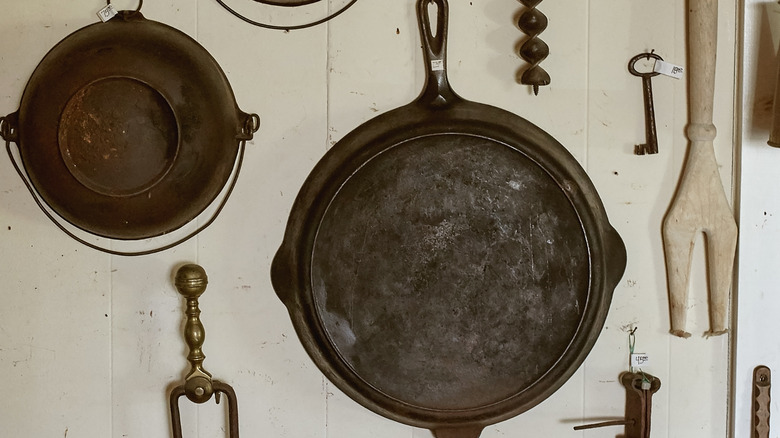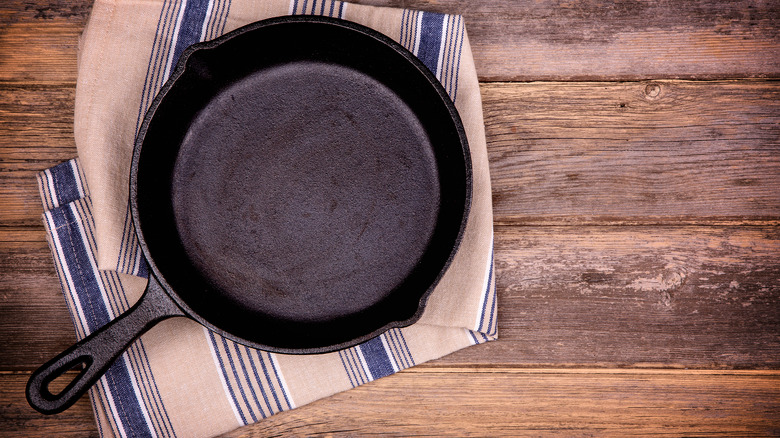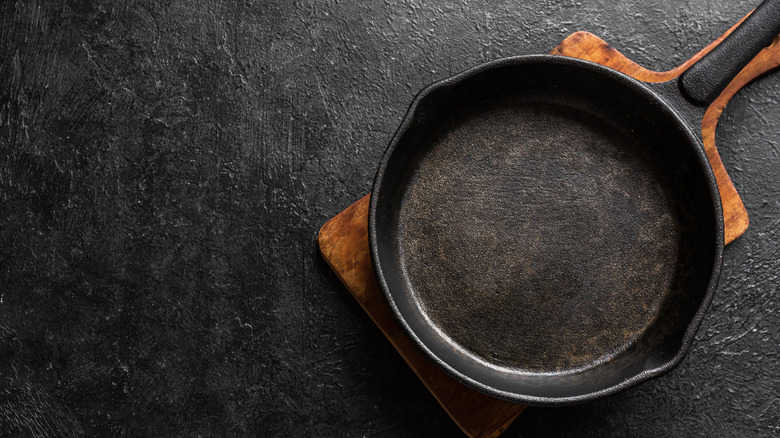How To Spot An Antique Cast-Iron At An Estate Sale
Antique cast-iron pans are in high demand. This is no surprise given the quality and craftsmanship that went into many of these cookware pieces. And while you can purchase new cast iron from an online retailer, it likely will not be nearly as well made as an antique cast-iron cookware piece. This means that cast iron enthusiasts often search high and low for a piece of this vintage coveted cookware. They rummage through garage sales, antique shops, and thrift stores in hopes of snagging the antique cast-iron cookware of their dreams.
Estate sales are a hot spot for this cookware because they often house a person's entire set of antique cast iron rather than the one or two pieces you may find at a thrift store. It is also more likely that you will find true antique cast iron at an estate sale. You can view and feel the items in person, too, so you do not have to worry about deceitful online photos and can verify that the pieces are real antique cast iron. There are a few signs to look out for that will help you determine whether the pieces you find are authentic, including taking a careful look at the manufacturer's marks and the shape of key elements in the piece.
Identify the manufacturer
If you are lucky enough to come across a piece of cast iron you think is vintage, one method you can use to confirm that it is truly antique is to identify the manufacturer. There are a few companies that have crafted cast iron that would now be classified as antique. Birmingham Stove & Range Co., Griswold Manufacturing, Atlanta Stove Works, Favourite, and Wagner Ware are a few of the manufacturers to look out for.
Identifying logos and other markings can help you determine if cast-iron cookware was made by one of these companies. If you've found a logo, conduct an internet search to look for photos of other pans with that same marking, which can help you identify the exact manufacturer. From there, you can research the manufacturer's logo throughout the decades to find out exactly when your item was made.
For instance, Lodge's more modern pans feature an egg in a pan logo. Its older pans only sported the company's name. There are thousands of variations of logos and markings amongst antique cast iron manufacturers, so it's helpful to do your research before you even begin your search.
How to classify unmarked cast iron
So, you've come across the perfect cast-iron pan among all of the other valuable things at an estate sale. It has all of the signs of an authentic piece — it's heavy, it's all the same color and material, and it's rusty, indicating it is made of cast iron. However, you just can't find a logo or any of the typical markings that would help you identify the manufacturer and confirm that it is truly antique. Fear not, because it is still possible to identify unmarked cast-iron cookware.
Specific design elements belong to each manufacturer's product lines and identifying these can help you find out what kind of cast iron you've discovered. For example, Lodge Manufacturing Co.'s Blacklock pieces made from 1900-1910 feature a smashed T-shaped handle reinforcement rib and a raised size number on top of the handle.
Meanwhile, Griswold Manufacturing Co.'s unmarked skillet series includes italicized numbers that are ½" high, a three-digit part number, and a smaller overall size. To prepare for finding unmarked pieces, it may be helpful to connect with social media groups that focus on collecting vintage cast-iron pieces. This is an especially great resource when you find rarer pieces that cannot be easily identified using these methods. Cast iron experts may be able to identify your pieces by simply looking over a photo that you've shared.


